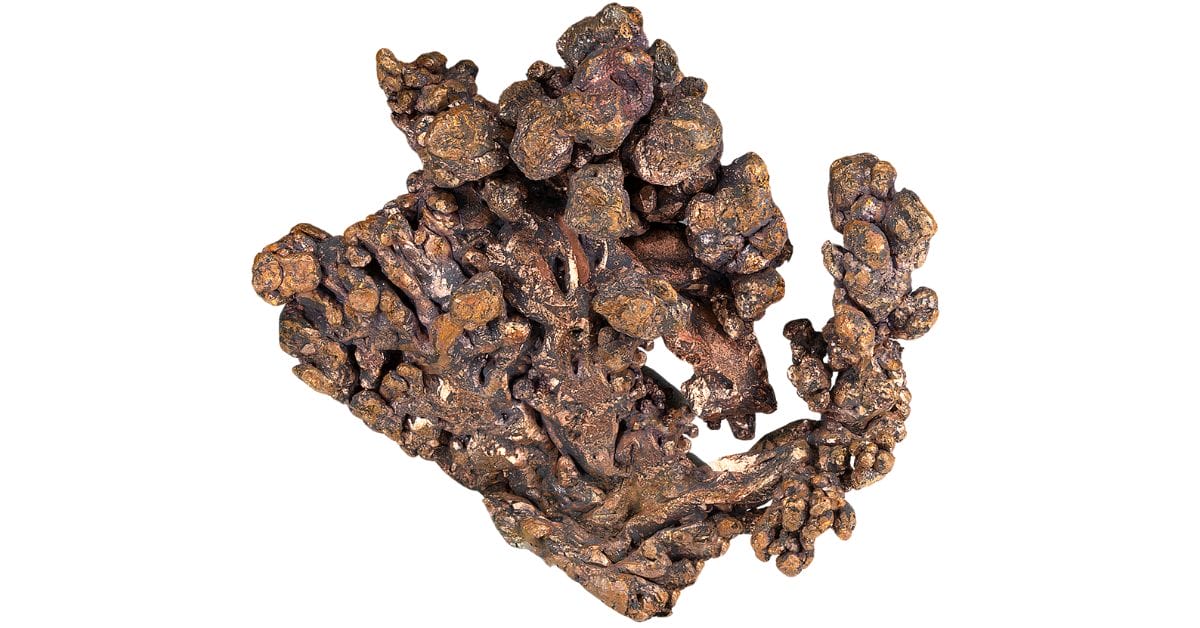Figuring out how much copper is worth can be interesting because its price changes a lot. It’s used in so many things around us, like in our electronics and plumbing, which makes it really important.
The value of copper isn’t just about the money; it’s also about how useful it is in our daily lives. For example, because it’s good at conducting electricity, it’s crucial for keeping our lights on and gadgets running.
What is Copper
Copper is a type of metal that’s really good at conducting electricity, which is why it’s used in a lot of wires. It has a reddish-brown color and can be found in many places around the world.
People also use copper to make things like pipes and coins because it doesn’t rust easily.
Native Copper
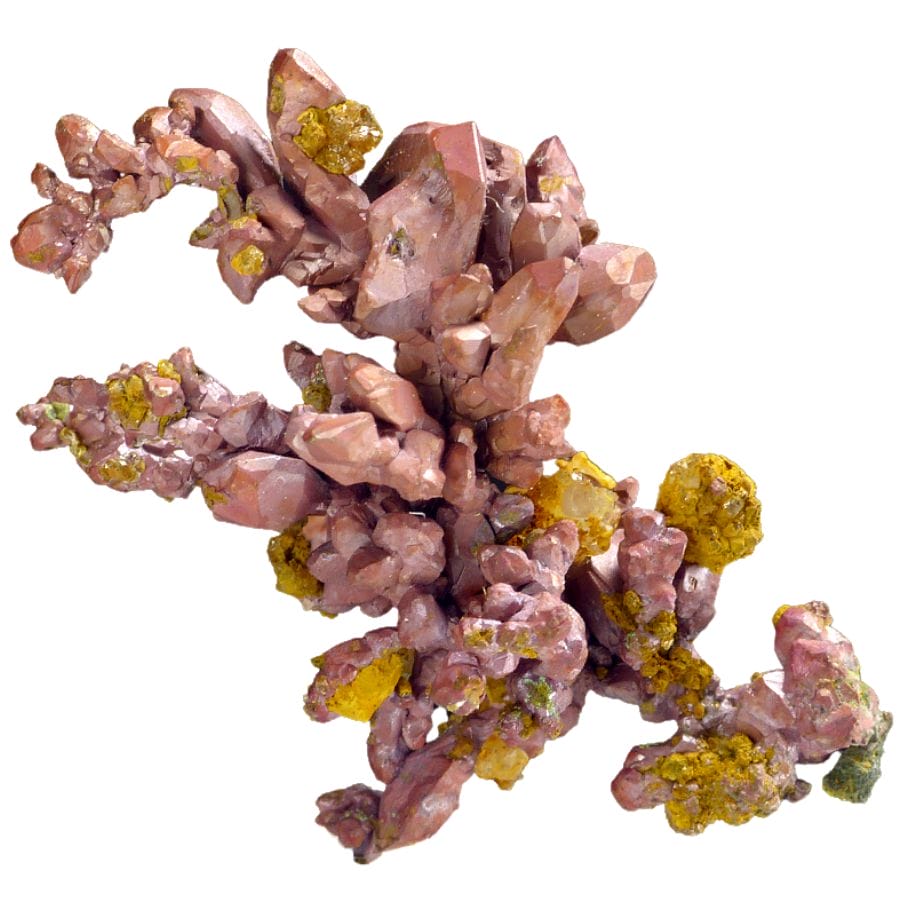
Native copper is really interesting because it’s just pure copper, not mixed with anything else like most copper we find. This means it’s just the metal, without being part of minerals that have sulfur or oxygen in them.
You don’t find native copper as often as you find copper mixed in other minerals. It shows up in certain rocks from volcanoes or in places where minerals that had copper have broken down, leaving the copper all by itself.
What makes native copper different is that it looks like the copper we know, with a reddish color, and it’s really good at conducting electricity. It’s also soft enough that you can shape it.
But unlike copper that’s been cleaned and purified to get rid of any other elements, native copper might come with other minerals and metals.
How much is native copper
The value of native copper varies a lot, depending on how big it is and what it looks like. Small pieces might cost between $5 and $50, but if you find a big or really cool-looking piece, it could be worth $100 or more.
Copper Sulfides
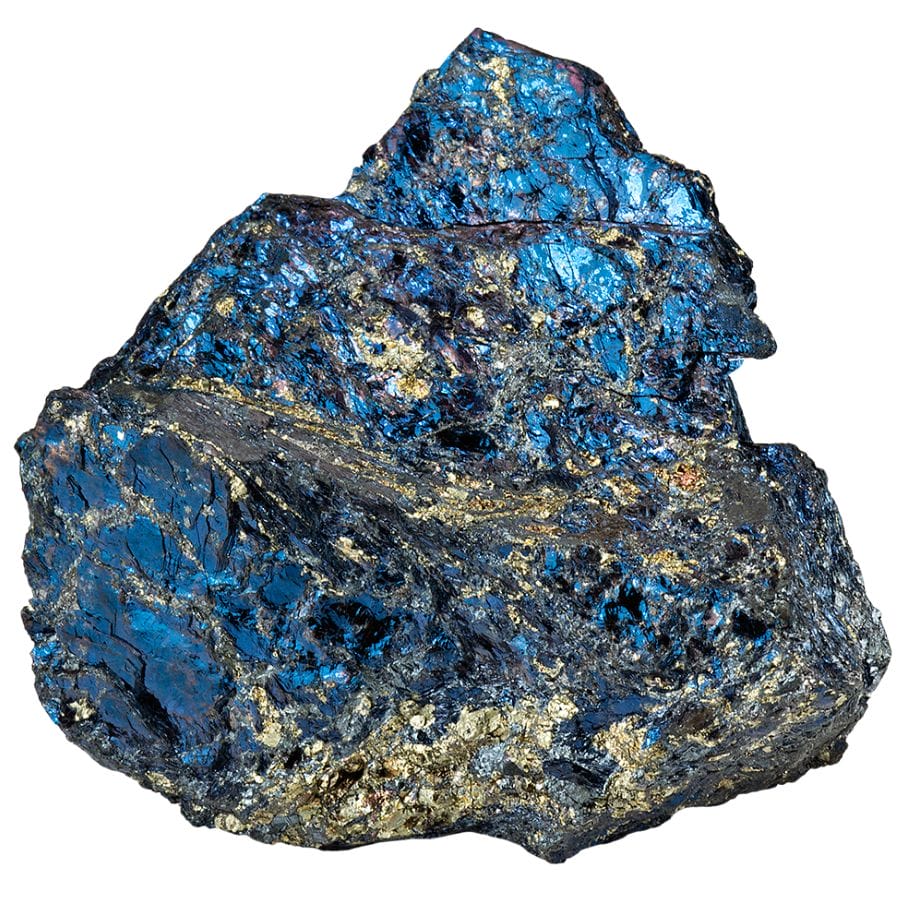
Copper sulfides are minerals that combine copper and sulfur. Copper sulfides, such as chalcocite and covellite, stand out with their unique colors.
They’re different from other copper minerals because they specifically have sulfur in their makeup, unlike copper oxides or carbonates that contain oxygen or carbon dioxide.
These minerals are key for mining because they’re a major source of copper. Extracting copper from sulfides is a bit different from getting it out of oxides or carbonates, involving steps like smelting to separate the copper from sulfur.
How much are copper sulfides
The value of copper sulfides, like the kind found in chalcopyrite and bornite, changes based on how much copper they have and how they’re sold. For rough copper sulfide ore, you might pay around $50 to $200 for each ton.
Copper Oxides
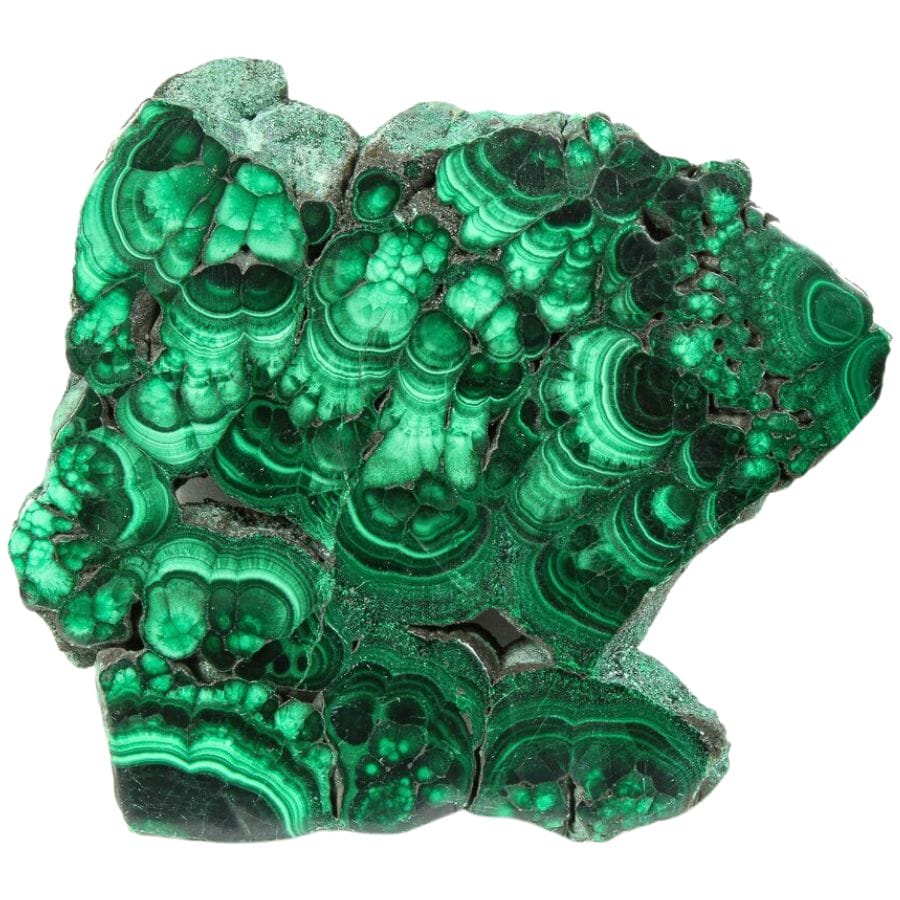
Copper oxides are minerals that have copper and oxygen atoms together. They’re different from copper sulfides because they don’t have sulfur in them. This makes them unique in the big family of copper minerals.
One cool thing about copper oxides is how they’re processed. They usually form when copper sulfide minerals, which are buried deep in the earth, get exposed to oxygen in the air or water.
This process can make the copper even more concentrated than it was before.
It’s easier to get copper out of copper oxides than sulfides. That’s because you can dissolve copper oxides in weak acids, which is a simpler way to get the copper.
How much are copper oxides
Copper oxide minerals like cuprite and malachite can be worth different amounts based on how much copper they have and what they look like. For industrial uses, the price could be around $0.50 to $2 for each ton.
But if you’re looking at copper oxide minerals for making jewelry or as collectibles, they could cost anywhere from $10 for small pieces to over $100 for really nice ones.
Copper Carbonates
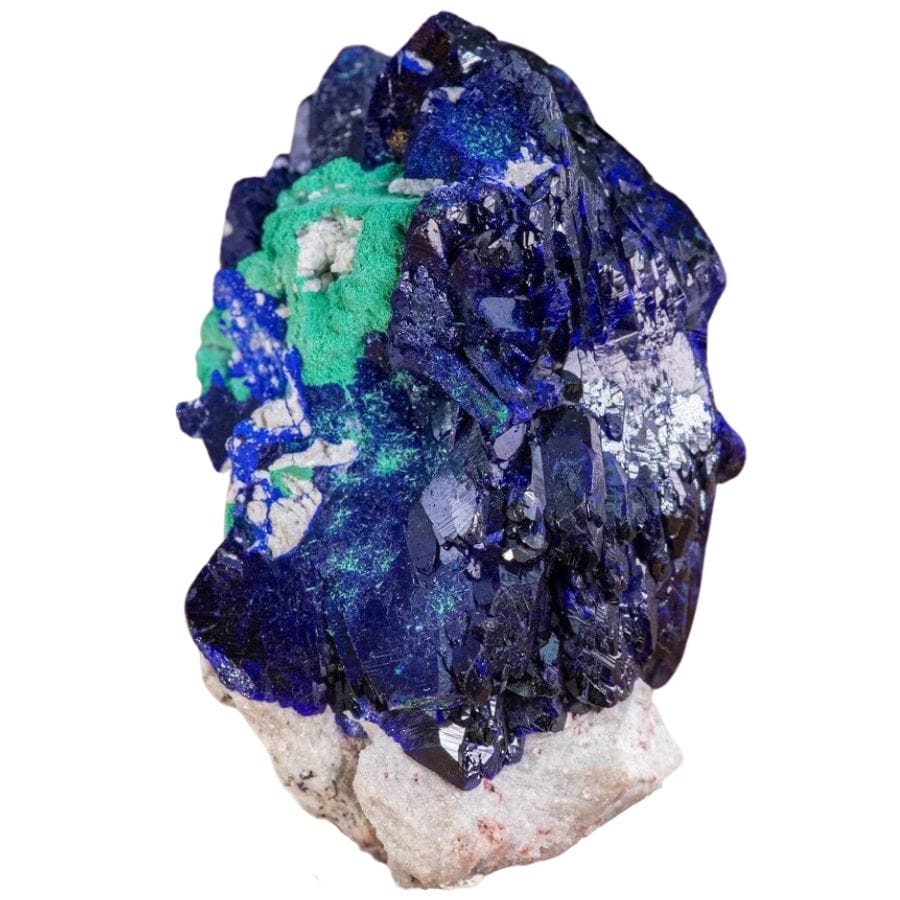
Copper carbonates are minerals that mix copper with carbonate groups. This mix makes them different from other copper minerals, like those mixed with sulfur or oxygen.
These carbonate minerals have vibrant green and blue colors, making them stand out.
These colorful minerals usually show up where copper minerals have been exposed to air and water. Over time, this exposure changes them into copper carbonates. This process creates beautiful and unique minerals like malachite and azurite.
Malachite and azurite are two types of copper carbonates known for their striking colors. Malachite is bright green, and azurite is deep blue. People have used these minerals for a long time, not just for copper but also for making jewelry and paint.
How much are copper carbonates
The price of copper carbonate ore might be low, around $0.50 to $2 per ton, depending on how much copper is in there.
If you’re looking at malachite and azurite for jewelry or as cool rocks to collect, they could cost anywhere from $10 for little ones to more than $100 for big, eye-catching pieces.
Copper Alloys
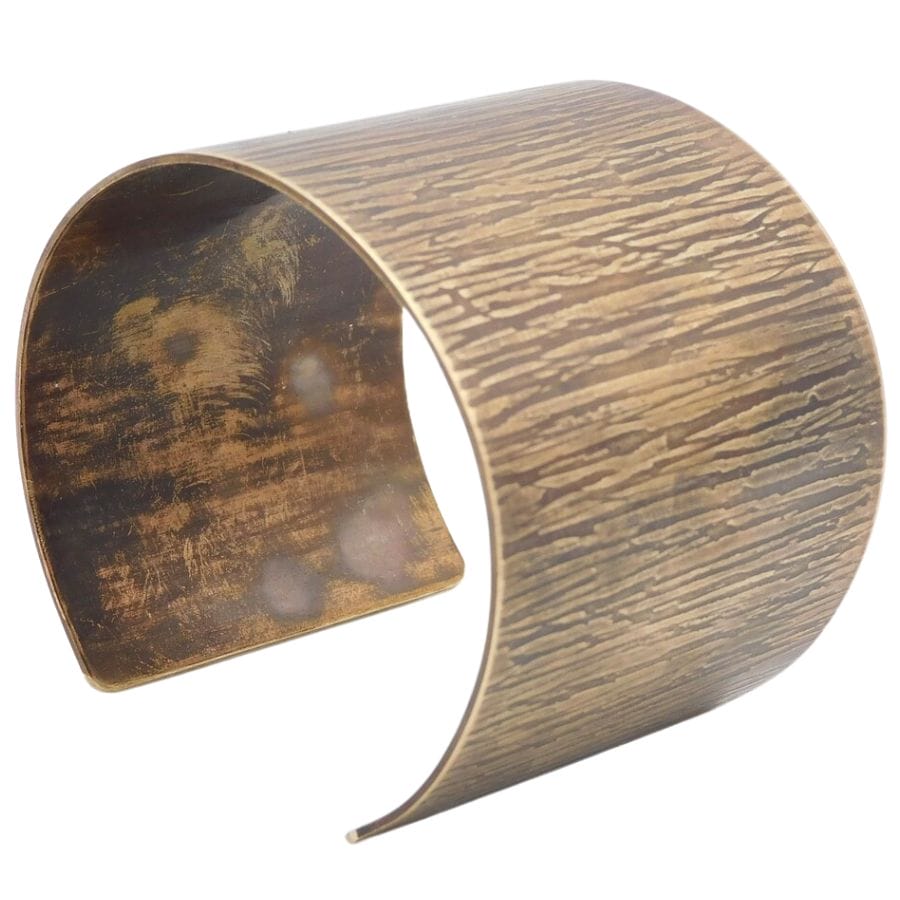
Copper alloys are a mix of copper and other elements to create metals that have different strengths and uses than just copper on its own. This mixing can change the copper value, making the alloys stronger or more resistant to corrosion.
For example, adding zinc makes brass, which is strong and looks yellow, while adding tin to copper makes bronze, which is even tougher and lasts longer in things like statues or gears.
Brass, bronze, and nickel silver are some common types of copper alloys. Brass is great for things like door handles and instruments. Bronze, meanwhile, doesn’t wear out quickly.
Nickel silver, which doesn’t actually contain any silver, is rust-resistant and conducts electricity well.
Copper alloys are really handy because they can do a lot of things that pure copper can’t. While pure copper is amazing for carrying electricity, it’s not as strong or hard as its alloys.
How much are copper alloys worth
Brass costs between $3 and $10 per kilogram, making it an affordable option for many projects. Bronze, another copper alloy, has a price range of $5 to $15 per kilogram. Nickel silver is pricier, ranging from $8 to $20 per kilogram.
Why Copper is So Expensive
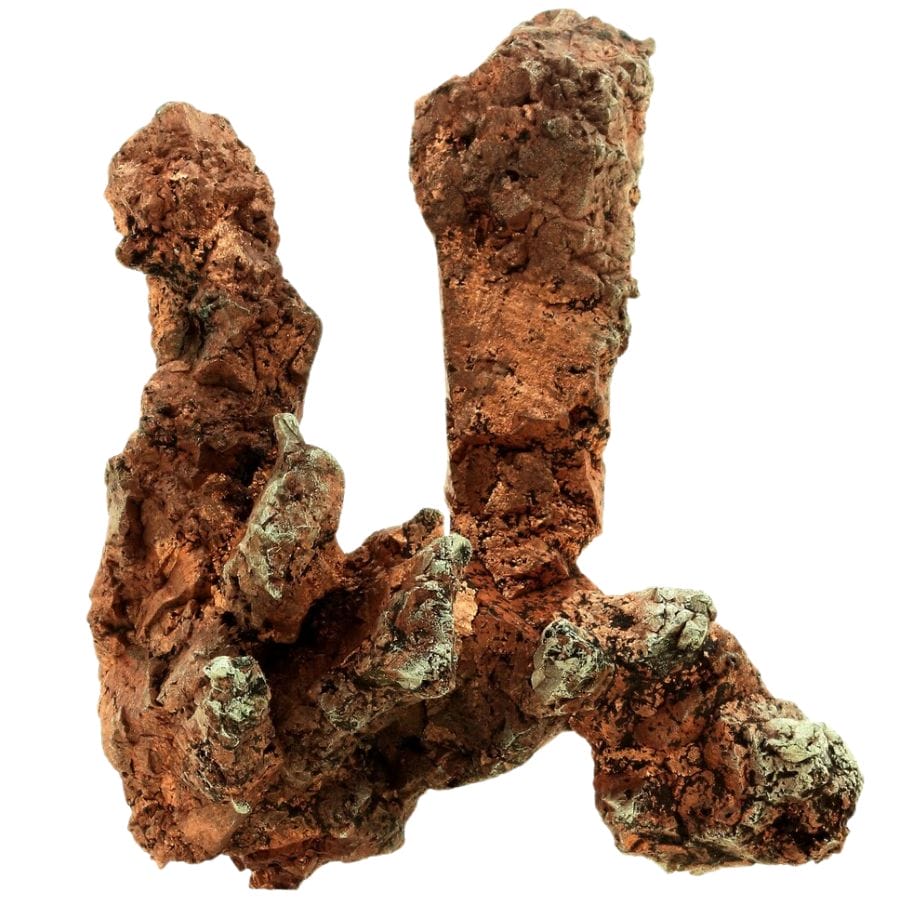
Copper has been valued for thousands of years because it’s easy to shape and has been crucial for making tools and decorations.
Today, copper is everywhere in our lives, from the wires that power our gadgets to the coins in our pockets. It’s perfect for carrying electricity and heat, which makes it a key part of things like computers, air conditioners, and cars.
Finding copper can be tough because the best places to mine it are getting harder to find and reach. This makes getting copper out of the ground more expensive and challenging, especially with laws that protect the environment.
The price of copper goes up and down a lot because it depends on how much people want it and how much is available.
How to Determine the Value of Copper
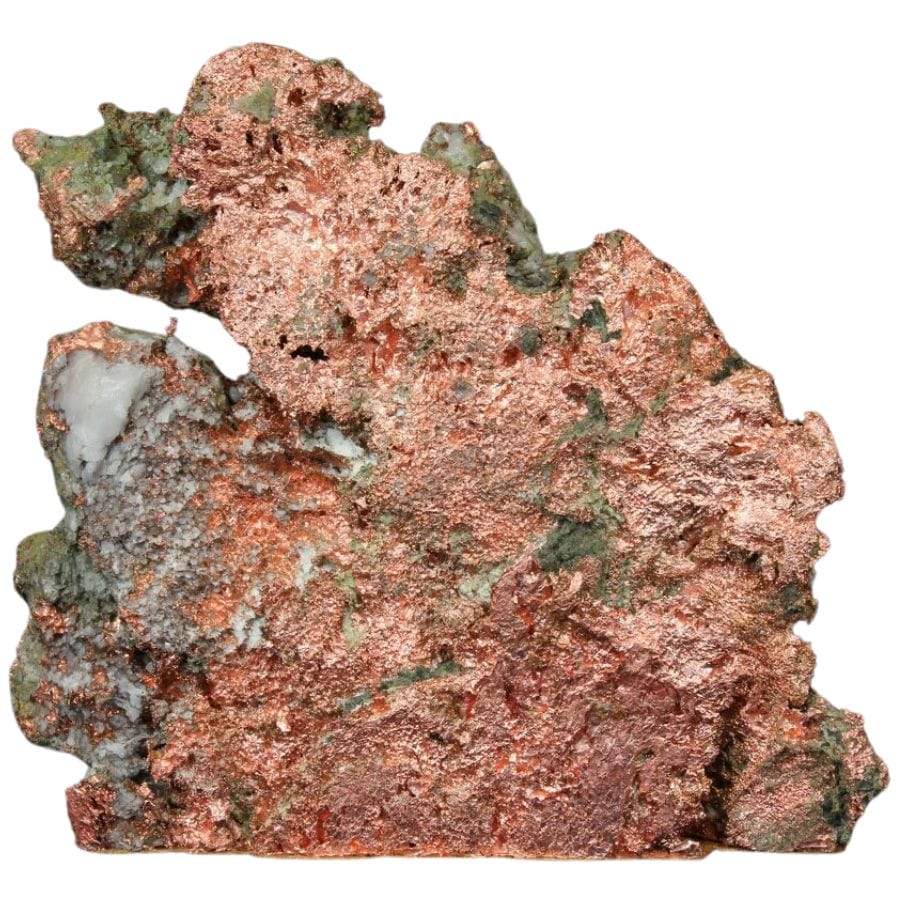
The value and price of copper can change because of many reasons. Things like the demand for it, how hard it is to get, and what’s happening in the world all play a part.
Supply and Demand
Supply and demand play a big role in how much copper costs. When lots of people want copper for things like building or making electronics, but it’s hard to find or get out of the ground, the price goes up.
Finding copper isn’t always easy, and getting it ready to use can take a lot of work and money. This can make it harder to have enough copper to meet everyone’s needs, which can also make prices go higher.
Sometimes, if copper gets too expensive, people might look for other materials to use instead. But when copper prices are high, companies might try to extract more copper, which can help balance things out again.
Geopolitical Tensions
Geopolitical tensions can mess with the supply of copper by causing problems in countries that produce a lot of copper. For example, if there’s conflict or instability in one of these countries, it might stop copper mining or make it hard to export copper.
This can affect the amount of available copper globally, which usually makes the price go up because there’s less copper for everyone who wants it.
When countries don’t get along and put trade limits or sanctions on each other, it can also make it harder for copper to be sold around the world.
Sometimes, even the fear that something like this could happen makes people willing to pay more for copper just to make sure they have enough.
Currency Exchange Rates
Currency exchange rates have a big impact on the price of copper because copper prices are usually listed in US dollars.
If the US dollar gets stronger compared to other currencies, it means people from other countries have to spend more of their money to buy copper, which can affect how much copper they buy.
When the dollar is weak, it’s cheaper for people using stronger currencies to buy copper. This can make more people want to buy copper, which might make the price of copper go up because there’s more demand for it.
These changes in currency value can make things tricky for businesses that buy or sell copper. They might use special strategies to protect themselves from sudden changes in exchange rates.
Historical Price Trends
Looking at the history of copper prices helps people guess what might happen next with its value. When prices have been going up for a while, people might think that they’ll keep going up.
This can make businesses buy up more copper, which can actually drive prices up even more because of the demand.
Traders use past prices to pick points where they think copper will either start to sell a lot or not sell much at all. These points are like invisible lines that can influence how people decide to buy or sell copper based on trends.
But, just because copper prices acted a certain way in the past doesn’t mean they’ll do the same thing in the future. Newly discovered copper deposits, big changes in how much copper we need, or unexpected events can all shake things up a lot.
Technological Advancements
Technological advancements can really shake up how much copper we need and how we get it. For instance, new gadgets and green tech like solar panels and electric cars need a lot of copper, which can drive up demand.
On the flip side, tech can also make us better at using copper more efficiently or finding alternatives, which might lower how much we use. But, even as we get better at making things with less copper, our growing love for tech keeps the demand for copper high.
Meanwhile, new mining and recycling technologies can help us find and reuse copper more effectively, which might make it easier to meet all this demand.
Yet, finding new copper sources and improving recycling takes time and money, which can also affect copper’s price.
Environmental Regulations
Environmental regulations can increase the price of copper by requiring mining companies to use cleaner, but more expensive, practices.
Installing equipment to reduce pollution and minimizing land disruption adds costs, which are then reflected in the higher price of copper.
When these rules limit mining in certain areas to protect the environment, the total supply of copper decreases. With less copper available and demand remaining steady, prices naturally go up.
Copper Price by Form, Size, and Unit of Measurement
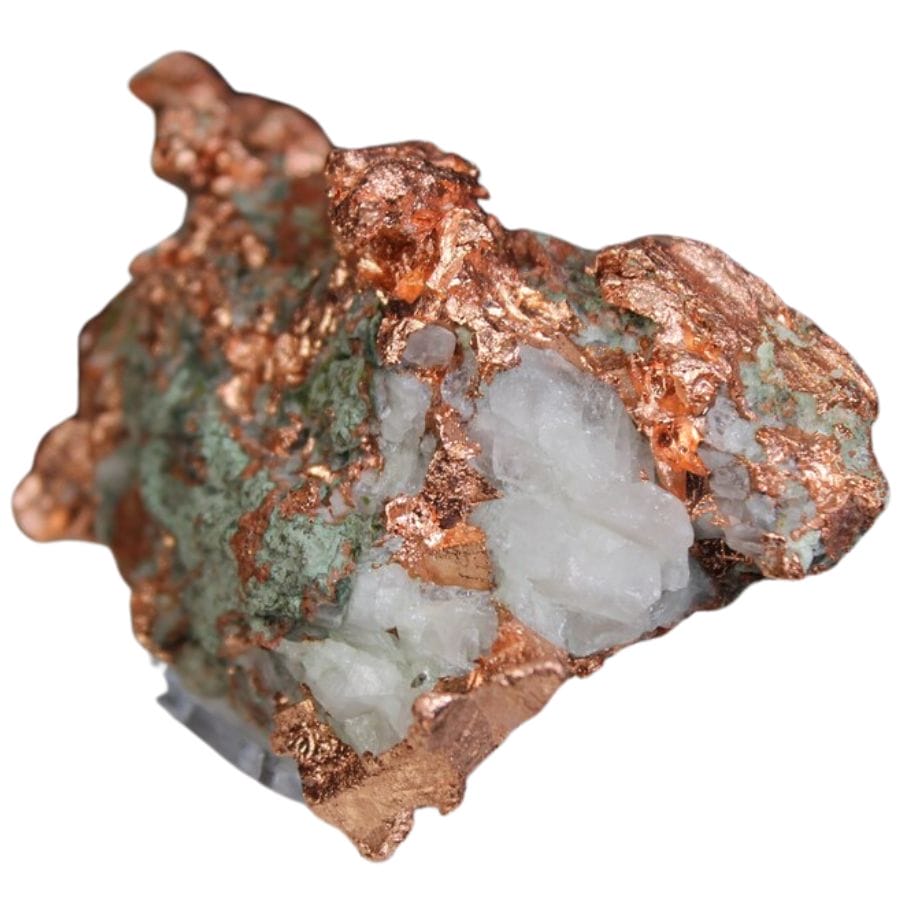
We made a great list showing all the different prices of copper. It’s easy to read and helps you see how much copper costs right now. This list is perfect for anyone curious about copper prices.
Copper pricing by specimen size
| Specimen | Small (less than 1 inch) | Medium (1 – 3 inches) | Large (3 – 6 inches) | Extra Large (over 6 inches or with unique features) |
| Native Copper | $5 to $20 | $20 to $50 | $50 to $200 | $200+ |
| Copper Sulfides | $10 to $50 | $20 to $100 | $50 to $200+ | $200+ |
| Copper Oxides | $5 to $20 | $20 to $50 | $50 to $200 | $200+ |
| Copper Carbonates | $10 to $50 | $20 to $100 | $50 to $200+ | $200+ |
Copper alloy pricing by form and weight
| Copper Alloy | Sheet (USD per Kilogram) | Rod (USD per Kilogram) | Ingot (USD per Kilogram) |
| Brass | $5 – $12 | $4 – $10 | $3 – $8 |
| Bronze | $7 – $15 | $5 – $12 | $4 – $10 |
| Nickel Silver | $10 – $20 | $8 – $15 | $6 – $12 |
Pure copper pricing by form and weight
| Copper Form | Price per Kilogram |
| Sheets | $5 – $12 |
| Rods | $4 – $10 |
| Ingots | $3 – $8 |
| Wires | $7 – $15 |
The Most Expensive Copper
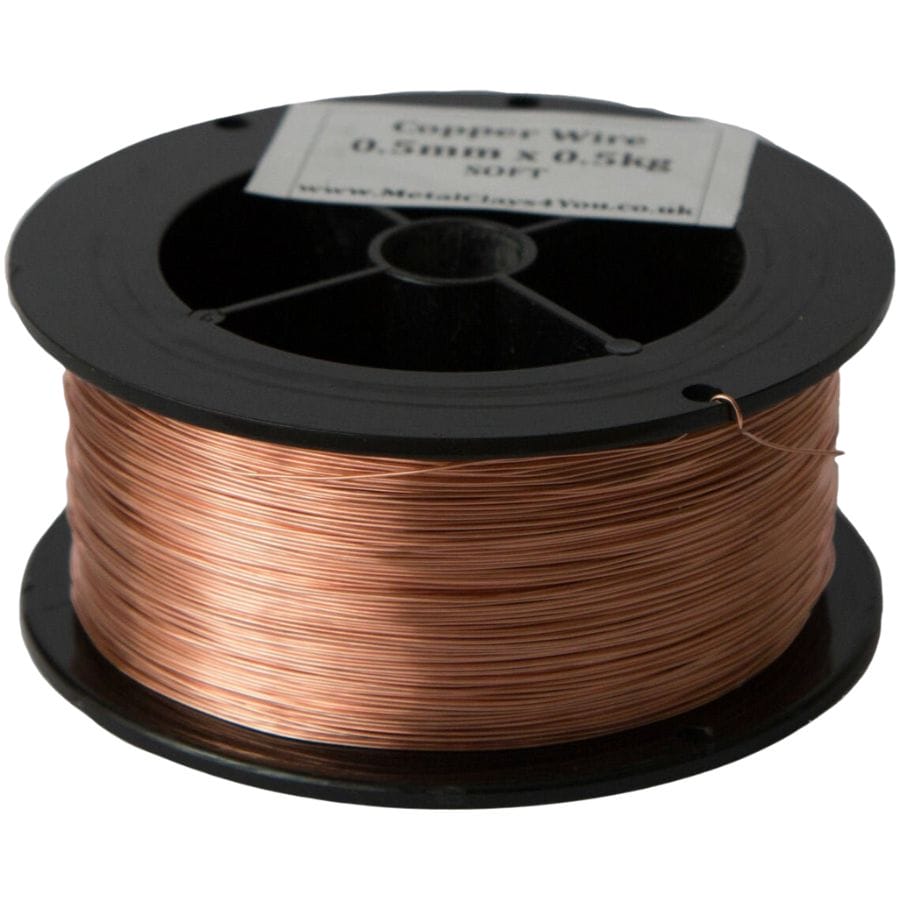
Electrolytic Tough Pitch (ETP) copper is a type of copper that’s really good at conducting electricity, which is why it’s used in a lot of wires and cables. This copper is also used for making parts in electrical circuits and motors.
Is copper expensive? Well, the cost can change a lot, but ETP copper’s price usually depends on how much people are buying and selling copper for all around the world.
ETP copper is produced by refining copper to a very pure state, which makes it ideal for electrical uses where you need a lot of current to flow easily.
The price of ETP copper changes a lot, just like the price of copper in general. Recently, the price for one ton of ETP copper could be anywhere from about $4,300 to over $8,700 per ton.
How to Get an Appraisal on Your Copper
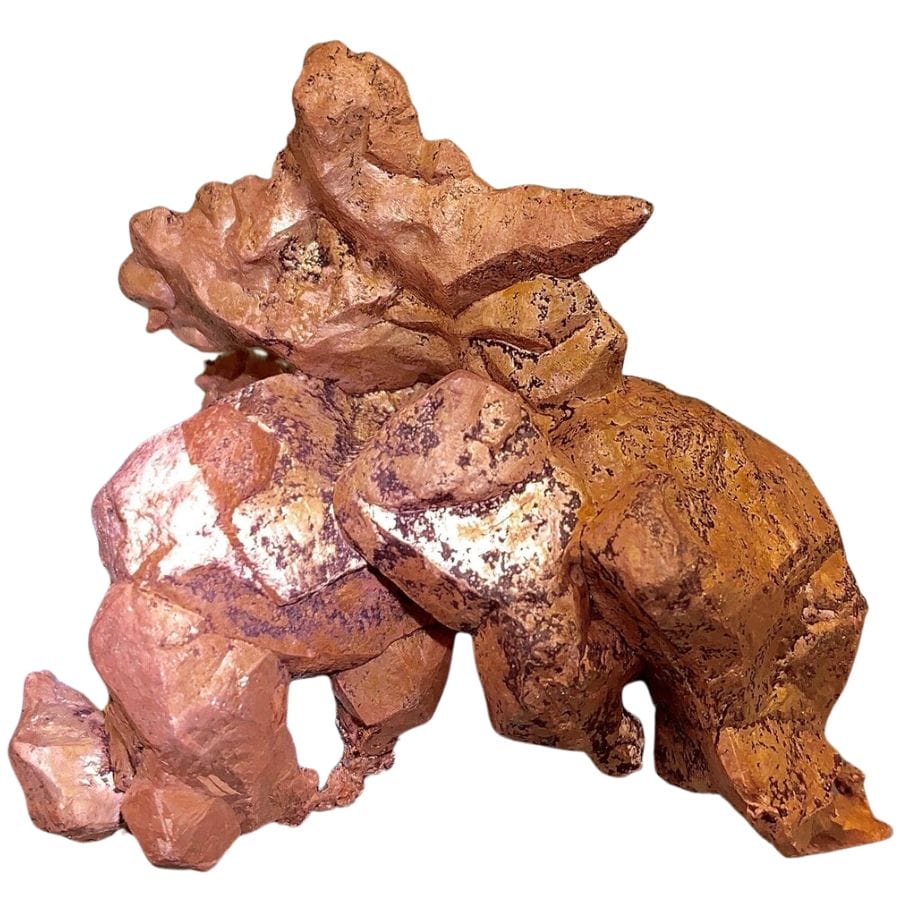
If you’ve got copper like wires or pipes, its value is usually based on the going market rate. You can check out the current prices by looking up metal trading websites or talking to companies that deal with metals.
But, if you have something like an old copper vase or a cool native copper specimen, you’ll want to find someone who knows about antiques or minerals to figure out what it’s worth.
These experts look at things like how old it is, where it comes from, and what condition it’s in to give you a price. For certain specimens, they’d also consider how nice it looks and how rare it is.
You can also try online appraisal services to find out what your copper items might be worth. Just make sure you give them all the details you can to get the best estimate. Some services specialize in antiques or minerals, so pick one that fits what you have.
If you think your copper item could be worth a lot, it might be a good idea to get a few different appraisals. This way, you can compare and have a better idea of its true value.

